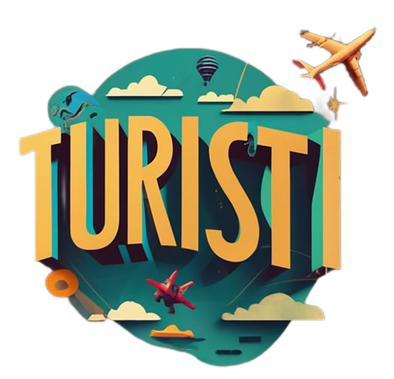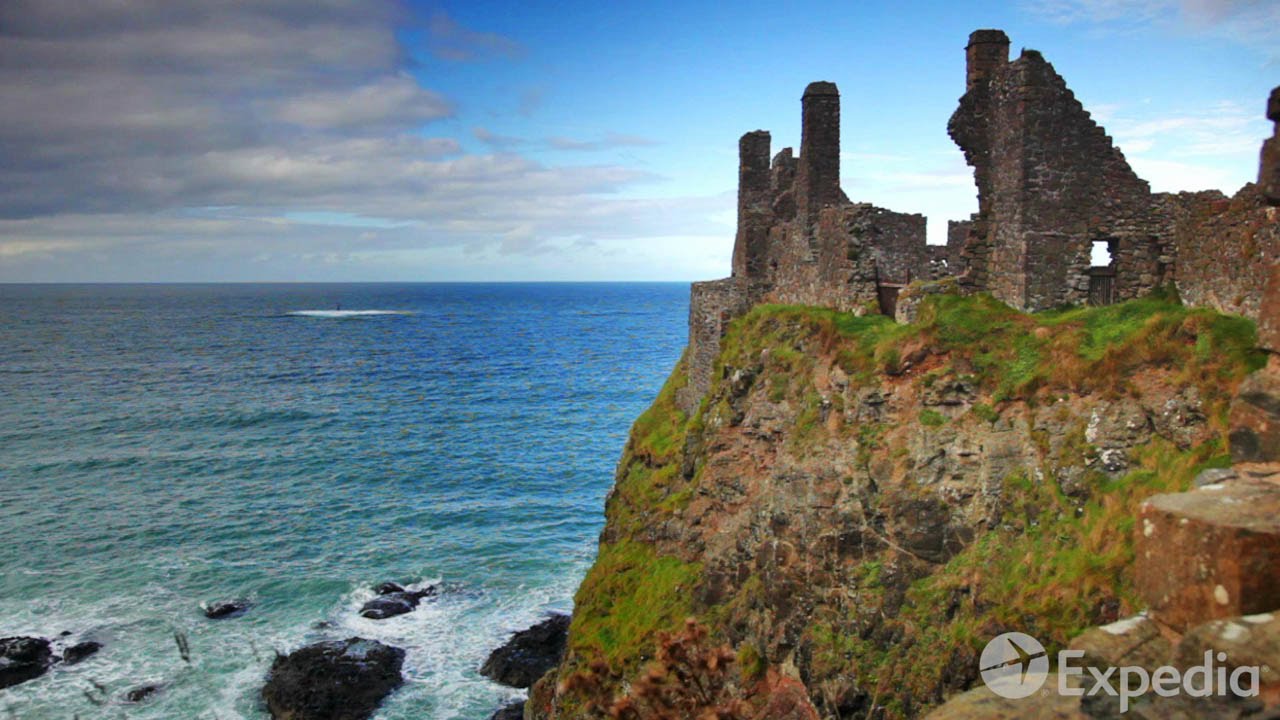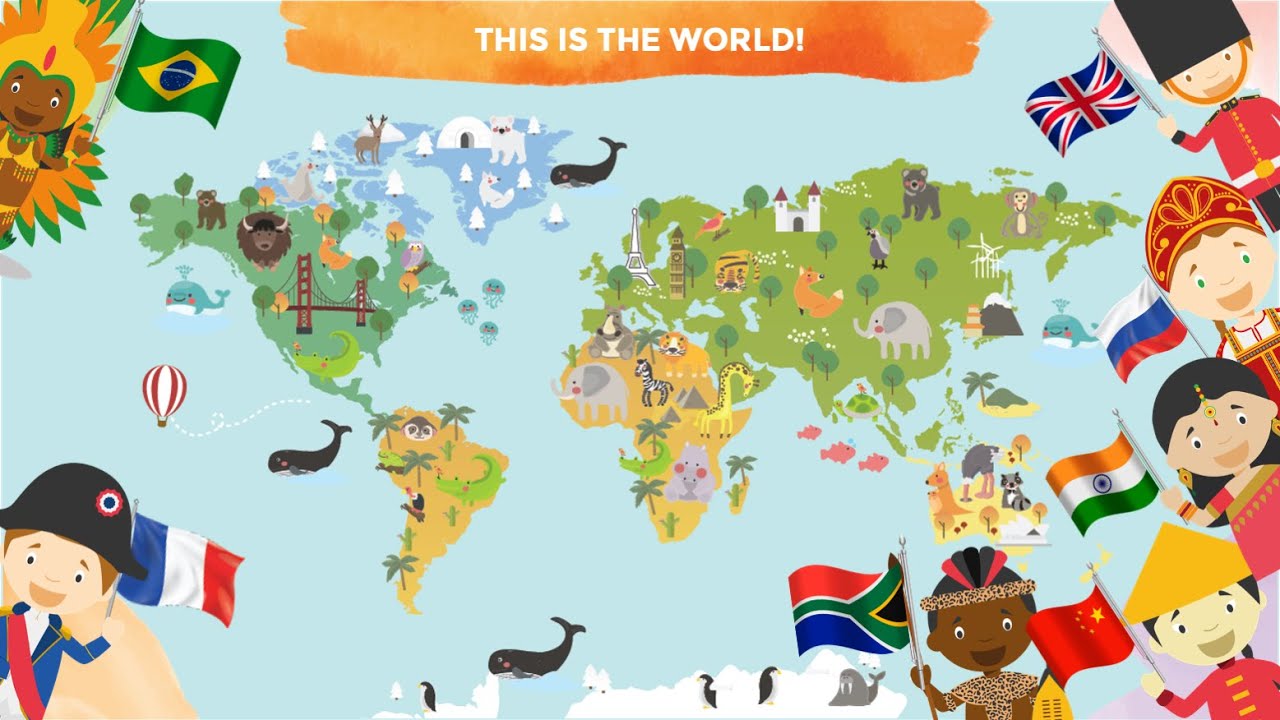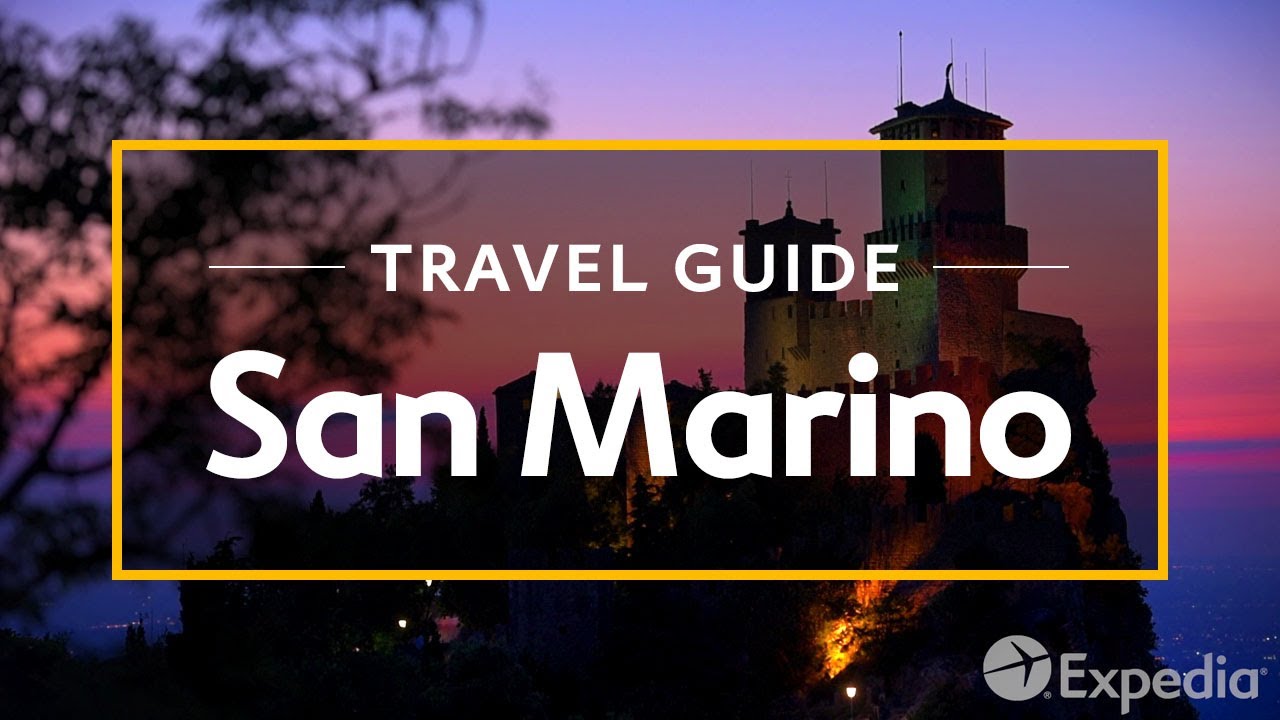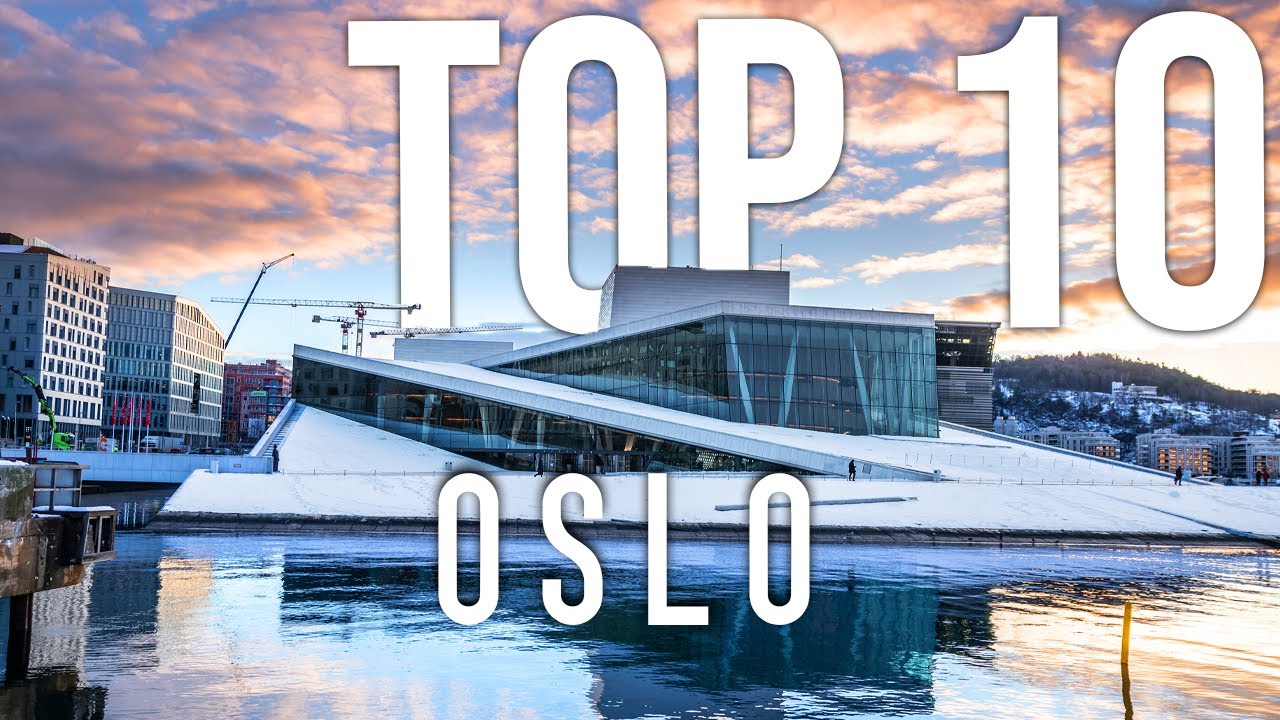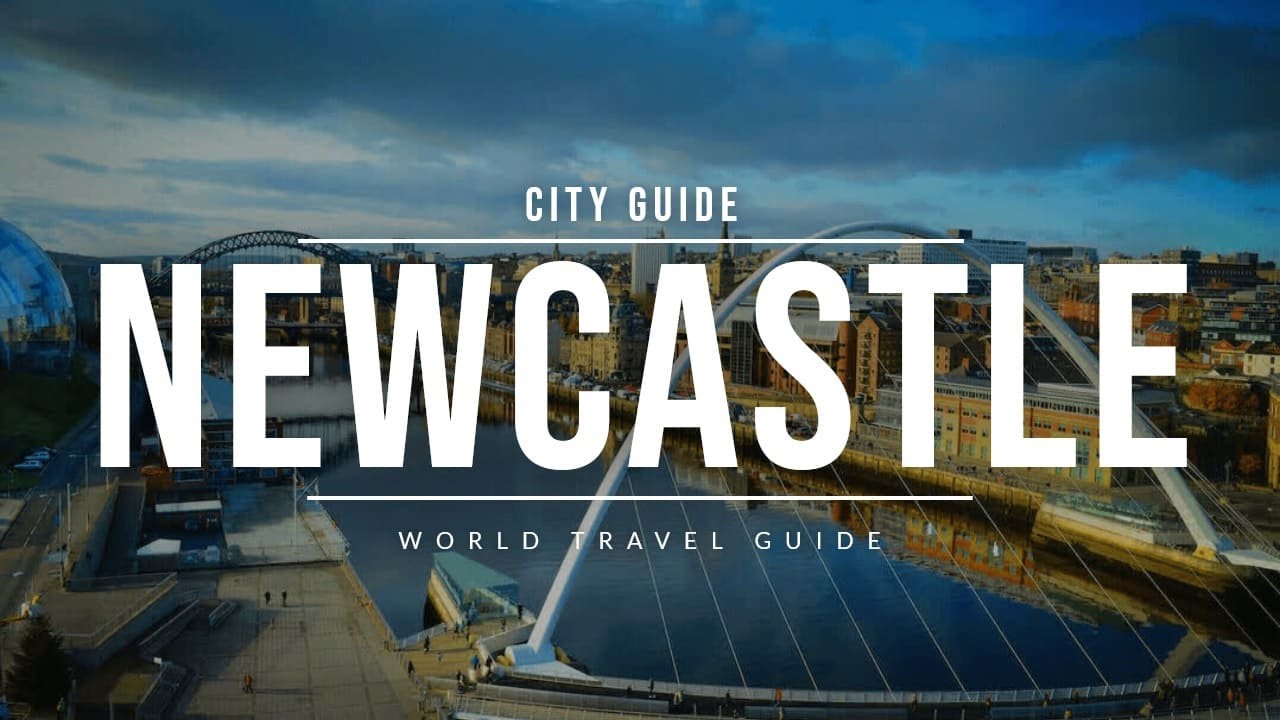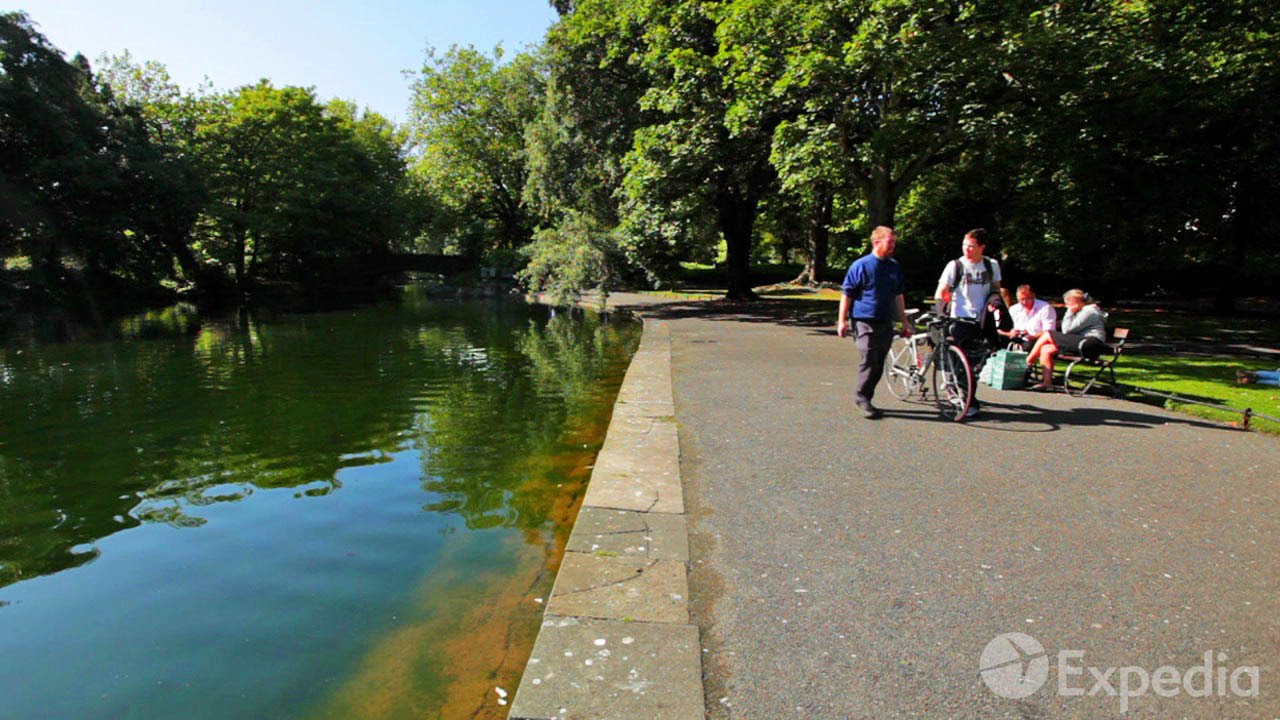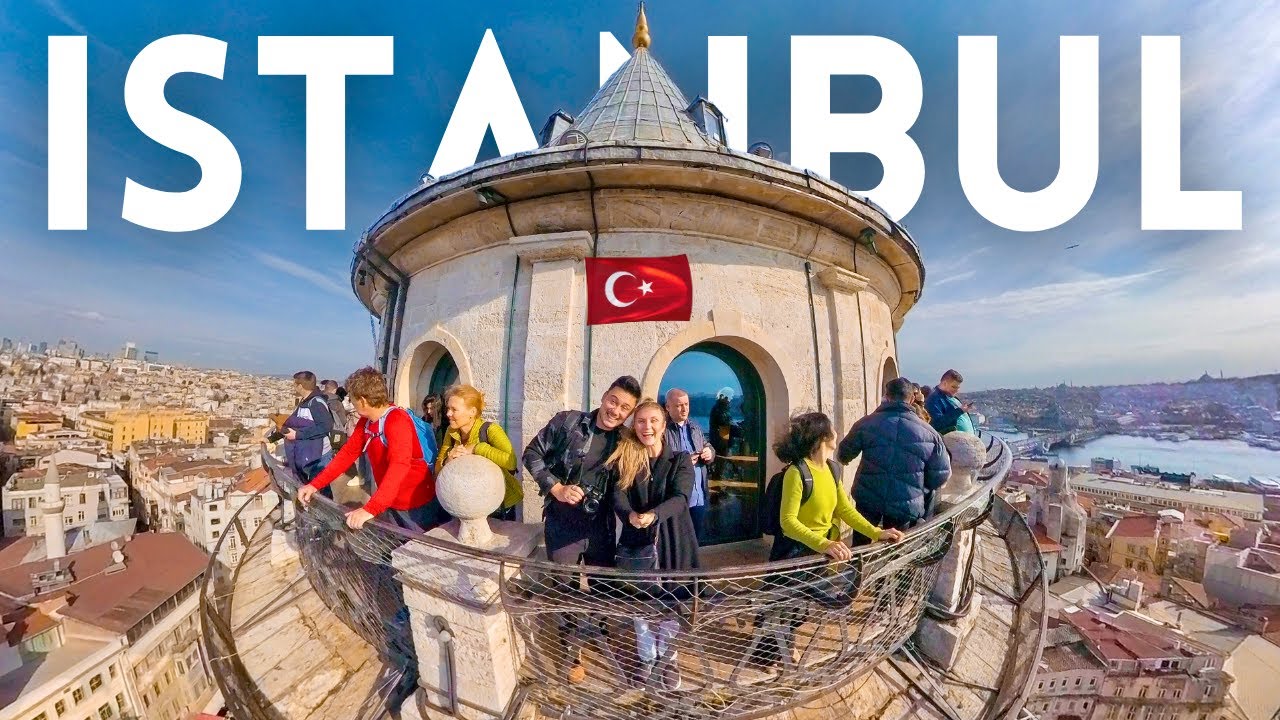Mallorca (Majorca) is one of the Balearic Islands, located off the east coast of Spain. Mallorca and its capital Palma de Mallorca …
Welcome to Mallorca! This is World Travel Guide with another episode of Ultimate Travel Guide, and this time we will take you on a fascinating tour around Mallorca and show you all the places that are worth visiting, but also provide you with useful tips to make your next trip more enjoyable.
That’s why we highly recommend you to watch this episode until the end. Mallorca is one of the Balearic islands, located in the western Mediterranean off the east coast of Spain. The island and its capital Palma are overflowing with character, while its beaches are famous
All around the world, making it one of the most sought after summer destinations. An island steeped in history, Mallorca boasts charming villages, historic sites, an artisan and cultural scene and popular events taking place throughout the year. With over 500 kilometers of coastline, there are more than 200 beaches to choose from in Mallorca.
From large stretches of sand backed by holiday resorts, to virgin palace and little sandy coves. Palma de Mallorca is the capital of the island and is located in the bay of the same name. Palma is a city of sophistication and fun and well worth taking the time to discover its many pleasures.
The city enjoys an excellent climate all year round and is known for its beach tourism, but it also has an attractive historic quarter. The city’s old quarter, which is a must-see for anyone spending some time in Palma, is defined by the immense gothic cathedral.
Even if you haven’t visited Mallorca, you will no doubt know the magnificent Catalonian cathedral that is the landmark of the city. Overlooking the harbor, it lies in the oldest part of the city and was built between the 13th and 17th century. The immediate neighborhood surrounding the cathedral consists of cobbled lanes with market
Stalls, one-off boutiques and eclectic shops. It’s also home to many restaurants and hotels and is an excellent base from which to explore the further delights of a city that combines history with contemporary flair. Palma de Mallorca has five beaches and eight bathing areas with long stretches of sand with crystal clear water.
It is also the perfect destination for water sports, especially sailing. In Palma you will find the best of the mediterranean and international gastronomy, all prepared with the finest products that the land and sea has to offer. The Bellver castle is a gothic style castle on a hill, 3 kilometers to the west of
The center of Palma. It was built in the 14th century for king james II of Mallorca and is one of the few circular castles in Europe. First serving as the residence of the kings of Mallorca and afterward long used as a military
Prison throughout the 18th to mid 20th century, it is now under civilian control being one of the main tourist attractions of the island, as well as the seat for the city’s history museum. There are only four extensive sand beaches on Mallorca, and one of them is the stunning
El Arenal beach, 10 kilometers east of Palma. The beach is very popular, so you have to get there early in order to get a spot close to the shoreline. It is possible to park for free in the streets and normally you will find a free space within 200 meters from the beach.
The calm waters of El Arenal are ideal for swimming, while part of the beach is a designated surfing area. Amenities include a yacht club, tourist office and public toilets, sun umbrellas, loungers and water sports equipment are available to rent.
You can try all kinds of water sports here, including water ski, jet ski, pedal boats and paragliding. There are also plenty of restaurants, cafes and bars along the beach promenade. Puerto Portals is widely known as the most glamorous marina on Mallorca.
It has become an attractive destination for the rich and famous to moor their yachts, and now hosts more than 600 yachts up to 60 meters in length. Unlike many other ports in Mallorca, there is a year-round buzz here. It’s the place to visit for designer shopping, people watching and first-class restaurants and bars.
Located in the southwest of Mallorca, just a 10-minute drive from Palma, Puerto Portals is connected to the more modest town of Portal Nous. There’s a real cosmopolitan feel to the place and if you’re lucky, you can meet some famous people here.
Puerto Portals is not actually that big – you could walk from one end to the other in five minutes, but the point of being here is to sit and enjoy the world as it goes by. There are designer boutiques selling jewelry watches, swimwear and other accessories.
Next to the marina shipyard, you can find the main stretch of beach called Portals Beach by most, but officially called Oratori Beach. It’s a splendid sheltered beach with golden sand and calm waters. Magaluf is a major holiday resort on Mallorca, primarily catering to the British, German and Scandinavian package holiday market.
It is located in the municipality of Calvia and is situated within a group of towns. The resort caters to young adults and couples, as well as families, with peak season during July and August. During the winter season, the population of Magaluf consists primarily of local residents,
With most resort and package-based hotels closing their doors. The Palma Nova resort is located just north of Magaluf and is approximately a five-minute drive from the center. The town consists of a white sandy beach and the Magaluf strip, which is the center for the main nightlife and restaurants.
There are many bars and nightclubs here and many famous DJs have played at the resort. A popular challenge for tourists is a swim to the Black Lizard Island. The island is situated right in the center of Magaluf’s bay and is approximately 400 meters away from the beachfront.
Located inland from the south coast, Llucmajor heads up the largest geographical municipality in Mallorca and is often overlooked compared to more glamorous neighboring resorts. Earliest settlements in this area include the Talayotic site of Capocorb Vell, which you can still visit today. It is the oldest archaeological site in Mallorca.
The town later came into prominence as an industrial center, and thrived economically in the 20th century from shoemaking and excellent craftsmanship in stone, iron and wood. There is also a strong agricultural tradition here, and apricots and almonds still grow around the town.
Today, Llucmajor still enjoys a thriving community, which does not rely wholly on tourism and is fairly active all year. One of the major benefits of the town is its location. Based at the foot of the Randa hills, the town has excellent motorway access and is very close to the city of Palma.
It is also close to several major resorts and is surrounded by farmland and charming rural hideaways with mountain and forest views. if you are visiting Llucmajor in September, there are several fiesta weekends which include a large market for local products and crafts. the regular weekly market is held on Sunday.
Hiking and biking is very easy in this area with its quiet streets and gentle hills. There is also a major golf resort within 5 kilometers. A notable lighthouse is located at nearby Cap Blanc, and a hilltop sanctuary boasts beautiful views from the Randa hills.
The Es Trenc beach is located in the southern part of Mallorca. It is the most famous beach in Mallorca and the last large natural beach which is not spoiled by big hotels and dozens of restaurants. The beach is now located in a national park.
Es Trenc is more than 2 kilometers long and covered with fine-grained bright sand. In the back of the beach there are some lovely dunes, but it is not allowed to stay there. This is a beach for nature lovers, who will appreciate the sense of remoteness, wild beauty and heat.
Lounge chairs and umbrella rentals are available, some of which are self-service, and there is plenty of space to find your own patch of sand to place your towel. It’s recommended to bring extra water and food, as there are no shops or accommodations nearby, and facilities are limited to basic toilets.
No showers or changing stations are onsite. Lifeguard stations can be found in the busier parts of the beach area and rescue service does have easy access to the beach. There is also plenty of paid parking available at both entrances. Cala Figuera is located about 60 kilometers from Palma de Mallorca.
It is located in the municipality of Santanyi in the southeast, and lies just 5 kilometers outside of the small town and can be reached in under 10 minutes via the MA-6102 road. This village is a beautiful fishing and sports port, with just over a hundred moorings.
Its location is spectacular: It takes advantage of a rocky entrance from the coast and is surrounded by pine forests. On this beautiful stretch of coast you will find some of the best coves and beaches in Mallorca, such as Cala Santanyi, a spectacular beach with its white sand and crystal clear
Waters, that provides a total rest and relaxation for its visitors. On foot, by bike or by sea, you can discover other fantastic landscapes of the area, such as the natural park of Mondragó. The park extends northeast of the bay and is a hiking paradise and home to various species
Of rare animals and plants. 70 species of birds alone live in the protected area. In addition to wild goats, least weasels, wild rabbits and Mediterranean turtles are among the wildlife there. Cala d’Or – or the Golden Bay – is a popular beach area on the southeast coast of Mallorca,
South of Portocolom and neighbouring the coastal town of Portopetro. In Cala d’Or you really get an all-around holiday experience with wonderful beaches, interesting excursions, well-preserved nature and a varied nightlife. The region is largely characterized by numerous small scenic coves and sandy beaches.
In addition to the eponymous Cala d’Or beach, there are many more worth exploring. In the heart of Cala d’Or you find a well-equipped marina and the yacht club, most of which is open to the public. The quays are lined with restaurants, bars and supermarkets.
With almost 600 moorings, Cala d’Or is one of the larger and more luxurious marinas on the island. You can rent boats of all kinds and even get your yacht-master license here. On the beach you can hire paddle boards, surfboards and other sports equipment.
In addition to beautiful spots for snorkeling, there is also the option of scuba trips with one of the dive centers. Manacor is the second largest town on Mallorca, after the capital of Palma. The largely residential town is situated on the northeastern tip of the island, with many
Of the nearby coastal resorts and attractions falling within its municipality. It used to be an agricultural town, but with the help of the railway line that was opened in 1879, it became the industrial and commercial center of the area. For those who enjoy practicing and playing tennis, Manacor is a very important city.
Rafael Nadal was born in Manacor, and still lives here with his family. He has built the ‘Rafael Nadal International Tennis Center’, to attract talented youngsters from all over the world. Currently, tourists mainly come to Manacor to visit Majorica’s factory shop, home to the island’s famous artificial pearl industry.
The town can be easily reached by train, since the train line between Palma and Manacor runs every hour. Manacor is a heavily developed area, and properties of all shapes and sizes are available. While the town itself tends to be mainly apartments and townhouses, there are plenty of rural
Luxury villas just outside the town. Situated in the district of Manacor, to the east of Mallorca, you will find the pretty fishing village of Porto Cristo. A quiet resort, Porto Cristo suits holiday-makers looking for a relaxed and traditional holiday destination. It is not a purpose-built tourist destination, it is a traditional fishing village.
Fishing boats bob on the wave in the natural harbor, one of the largest on the east coast, that shelters them from bad weather. At the other end of the scale, the Porto Cristo Nautica Marina offers shelter to pleasure boats and luxury yachts.
A pleasant stroll through the town will take you to some delightful bars and restaurants. Porto Cristo’s beach curves round the sheltered bay at the entrance to the harbour, with water that’s calm enough for easy swims. You don’t need to have a car to get around the coast, as boats sail from Porto Cristo’s
Harbor to hidden beaches and difficult-to-reach coves like Cala Barques. There is no buzzing nightlife in Porto Cristo, and the evenings are laid back. For a more interesting nightlife experience, you can head to Cala Millor, which is a short taxi ride away.
The Caves of Drach in Porto Cristo are four great caves, extending to a depth of 25 meters and reaching approximately 4 kilometers in length. The caves have formed by water being forced through the entrance from the Mediterranean sea. There are several lakes in the caves, including lake Martel, named after the speleologist
Who first crossed it, Edouard Alfred Martel. This is one of the biggest underground lakes in the world, 117 meters long, 30 meters wide and between 4 and 12 meters deep. The temperature in the caves ranges from between 17°C and 21°C. The caves are open to the
Public for a fee and are one of the main tourist attractions on Mallorca. The tour lasts for around an hour and consists of a 1200 meter route through tunnels, adorned with thousands of stalactites and stalagmites, up to a depth of 25 meters. Touching the rock formations and leaving the path is prohibited.
Cala Millor is the largest holiday resort on the east coast of Mallorca. Directly translated, Cala Millor means ‘the Better Bay’, and the beach is actually one of the best large beaches on Mallorca’s east coast. It was one of the first holiday resorts, and in the beginning it was very popular among German tourists.
Recently, the share of tourists from other countries have increased significantly, including Scandinavia and the Netherlands. The beach is more than 1 kilometer long and quite wide. The sand is bright and fine-grained, and the water is clean and clear. However, the relatively open bay means that there may be days with sizeable waves.
The beach has all the expected facilities, such as sun lounges, sunshades, showers and toilets. Along the beach, there is a lovely seafront with restaurants, cafes and tourist shops. The seafront leads all the way to the next town, Cala Bona.
At the beach in Cala Millor, you will find all sorts of water sports, such as jet skis, banana boat and parasailing. There is also a windsurfing school at the beach. The mountaintop town of Capdepera is a place rich in history and tradition.
Located in one of the most easterly parts of Mallorca, Capdepera remains largely undiscovered by the majority of visitors to the island. The general area around the town was the site of many bronze age settlements and was later occupied by invading forces,
Due to its strategic importance. Capdepera itself was built in 1300, in order to protect the citizens and shipping lanes from invaders and pirate attacks. The Castell de Capdepera is the biggest attraction here. The walk is quite demanding going uphill, but the views alone make it worth the effort.
The castle was declared an Asset of Cultural Interest, a status which affords maximum protection for the historic heritage. This monument can be visited all year round. Artà is a picturesque town, just a few kilometers inland from the northeast coast of Mallorca.
Tucked in a valley, it is surrounded by the mountains of the Llevant Natural Park, along with some of the island’s most beautiful rural plains. The residents of Artà are primarily Mallorquin, but the town does tend to attract tourists on Tuesdays for its weekly market,
Which is famous for its local pottery and basket weaving. Culture vultures are drawn to this area for its historic landmarks, particularly the bronze age Talaiotic settlement, the Sanctuary of Sant Salvador and the ancient fortress walls that surround it, and of course, the legendary
Caves d’Artà. Having stayed relatively untouched by tourism, Artà is a great destination to discover the authentic rural Mallorca. The coast is about 10 kilometers away and is easy to access, thanks to the island’s good public transport links. The Artà Caves are a fascinating network of underground caverns, whose weird stalactites
And stalagmites conjure up mysterious images of heaven and hell. An early visitor was Jules Verne, and the caves are said to have inspired his Journey to the Center of the Earth. The guided tour comes with special effects and the various chambers are given the names Hell,
Purgatory and Paradise. the number of visitors allowed and is limited, making it an almost private visit. You are not limited to entering at a specific hour. This means that you can plan your visit to the Artà Caves along with other activities in this part of Mallorca.
The vibrant northern town of Alcúdia is truly a year-round location, offering life, history and culture throughout all seasons. Lying just 1 kilometer inland from the famous holiday resort of Puerto Alcúdia, it’s the ideal place to taste rich Mallorcan heritage, without having
To stray too far off the beaten path. Alcúdia is drawing attention to its attractions and cultural gems. You can walk amongst its cobbled streets, small squares and ancient buildings, and you can feel its welcoming touch. Bequeathed by a strong artisan tradition with a full
Agenda of cultural events and centuries-old traditions throughout the year, Alcúdia invites its visitors to immerse themselves fully in the local lifestyle. Museums, art galleries, music, theater and literary recitals, art exhibitions, folk festivals artisan and gastronomic fairs throughout the year, make up one of the most comprehensive events calendars on Mallorca.
A popular nearby seaside destination is the resort of Puerto Alcúdia, with its sandy beach, stylish seaside promenade and restaurant scene. The coastline around this area also has many pristine coves of crystal clear-water. It’s maybe the most popular place in Mallorca for
Family beach holidays. From Puerto Alcúdia to Can Picafort 10 kilometers down the coast, you will find a strip of apartment blocks and resort style hotels, that offer everything from budget self-catering to luxurious five-star accommodation. As the town’s name suggests,
This was once just a port serving the inland town of Alcúdia. The area around the old fishing harbor is now the most attractive, an upmarket marina where fishing boats sit along luxury leisure yachts. From here, there is a pedestrianized promenade that runs along the coastline. On
This promenade and within the streets behind, you will find a good selection of bars, cafes and restaurants. Being a tourist resort, most of the hotels, restaurants and bars are only open in the summer months between April and October. If you are looking for a more cultural
Experience, you should stick to the inland town of Alcúdia. The Tramuntana Mountain Range is one of the most visited tourist attractions and the main mountain range of the Balearic Islands. So if you are visiting Mallorca, you cannot miss it. The mountain range offers multiple activities and routes, adapted to all people and tastes.
Declared a World Heritage Site by UNESCO, the Tramuntana Natural Park is one of the greatest examples of the perfect integration of the human footprint with nature, and extends over the territory of 20 municipalities. The mountains are also home to a series of picturesque and
Historic towns and villages, many of which, especially those on the northwestern flanks, were largely cut off from the rest of the island until the beginning of the 20th century. The Serra de Tramuntana mountains attract hikers, climbers and cyclists all year round.
At the eastern end of the Serra de Tramuntana, tucked between two hills, lies the ancient rural town of Pollença. An enchanting Mallorcan town packed with ancient blonde stone architecture, Pollença doesn’t feel like many of the other towns which have surrendered to tourism. The
Town’s residents are primarily islanders, making it a popular retreat amongst those looking to escape the more touristy beach resorts, in favor of a more cultural Mallorcan experience. Cafe life is the rule here. If you want to join in, we recommend visiting on a Sunday
Morning, when the main square is filled with market stalls and the locals congregate after church to relax in the cafes. There are a few boutique hotels in the town, while luxury retreats and large scale villas can be found in the lush countryside and hillsides near the town.
Pollença is a town rich in history, its many points of interest attract visitors from far and wide. Some of the highlights include an ancient Roman bridge, the 18th century church with a famous rose window and the Convent de Sant Domingo. There are also interesting
Ancient monasteries dotted around the surrounding countryside. Pollença’s port, Port de Pollença lies a few kilometers to the north. It has glorious beaches and a further selection of restaurants and cafes to enjoy. The lovely town Port de Sóller is located in the western part of Mallorca. It was built a
Long time ago as a seaport for the mountain village Sóller. Port de Sóller has a fine selection of hotels, and some of them are located in the city center and directly at the beach. The town has two sand beaches that are located in each end of the large bay. The main beach
Is a genuine town beach, centrally located near the charming harbor. This beach is more than 200 meters long and covered with fine-grained bright sand. The water is almost always calm and this is the most child-friendly beach. At the town beach, it is possible to rent colorful
Water bikes and sea kayaks for one or two persons. There is also a wide selection of restaurants and cafes at both beaches. Port de Sóller is a very charming seaport, surrounded by the high mountains of the mountain range Tramuntana. It is a very scenic drive via the
Mountain road all the way to the town, but it is faster to go through the tunnel. Another exciting option is the historic railway that has connected Palma de Mallorca and Port de Sóller since 1912, but you have to change trains in the inland town of Sóller.
The old inland town of Sóller became wealthy because of the valley’s abundant citrus groves. In the 19th century, when the area was isolated from the rest of Mallorca by mountains, the oranges were shipped to France from the nearby Port de Sóller. Many locals went to work in
France and returned to build some of the handsome modernista properties that grace this town today. The main square is Sóller’s beating heart, lined with numerous bars and cafes and dominated by the distinctive valley landmark, the Sant Bartomeu church. The tram clunks its way regularly
Through this splendid square. The market in Sóller is on Saturdays, when shoppers and traders create a real buzz. The town isn’t really a notable shopping center, but you’ll be able to find everything you would expect from a truly traditional village, such as local products
And crafts. Hikers and nordic walking fans will have lots of fun with the Serra de Tramuntana’s long distance path passing through the town. Sóller has a thriving cultural scene, which includes events open to residents and visitors alike throughout the year. In late August there
Is a five-day celebration, which includes exhibitions and concerts, as well as equestrian and sporting events. On the last day, the party always continues into the early hours. Fornalutx is a village with just 700 inhabitants, located in the Sera de Tramuntana. With its
Narrow winding lanes, stone houses and stone steps, the place is an architectural jewel on the west coast of Mallorca. Fornalutx has been named the most beautiful village in Spain twice in recent history. This mountain village nestles on the flanks of Puig Major, which is
The highest mountain on the island with an altitude of 1445 meters. Terraces of vineyards and wooded slopes surround the village and the scent of lemon and orange blossom runs through the streets. The village was founded in the middle ages by the Moors and time seems
To have stood still in the narrow streets. The wooden verandas with their green shutters are still reminiscent of the time of Moorish ascendancy in Mallorca. The center of the village is the Plaza España with the Town Hall. The stone houses on the market square have bars,
Restaurants and shops selling Mallorcan handicrafts and culinary specialties from all over the island. Fornalutx is the perfect starting point for hikes in the Serra de Tramuntana. The well-known long-distance hiking trail GR-221, better known as the Dry Stone Route, meanders through the
Mountains. The route is divided into several daily stages and leads from the southwest coast at Andratx to the north of Mallorca. Cala Deià is a tiny beautiful beach just outside of the village of Deià. The beach is only about
70 meters long, and is mostly small pebbles and large rocks. It is not really a family beach, as there is no sand, and jellyfish sightings in peak summer months are frequent. It is well visited by locals and tourists, particularly Germans. There are no umbrellas or lounge chairs,
Nor are there any water sports activities here. Cala Deià can be reached by car and there is a small paid parking lot, if you arrive early enough to get a space. Otherwise, you should park in the village of Deià and walk down the road about 3 kilometers, in order
To arrive at the beach. This beach is a great place to anchor a boat, and it is a very popular thing to do for the day. There is no lifeguard on duty here and first aid access is minimal. There are two restaurants on Cala Deià, both offering good quality fish food.
The small coastal village of Deià on the northwest coast of Mallorca, is one of the prettiest villages on the island. Perched in a ravine at the foot of the Teix mountain, with views out to the Mediterranean below, Deià has long been a magnet for famous artists, writers and other creative
People – most notably the writer Robert Graves. As one of the highest populated zones of the serra de Tramuntana, the village is part of a landscape awarded World Heritage Site status for the way in which nature, culture and traditions triumphantly merge. It’s worth taking time
To stroll around, admiring the sympathetically restored old stone houses nestling in narrow alleys. Those interested in the pre-history of the Balearics will make some interesting discoveries at the Deià Archaeological Museum and Research center. Housed in one of the oldest
Buildings in the village, a converted mill, the museum was founded in the 60s by the American archaeologist and painter William Waldren. The town of Valldemossa is only around 15 – 20 minutes drive from Palma de Mallorca into the Tramuntana mountains, but feels a world away from the capital. Perched on a hilltop
Surrounded by terraced terrain, Valldemossa was named after the area’s original Moorish landowner – Muza. With its car-free cobbled alleys and rich cultural heritage, the town is a treat to visit. The highest town in Mallorca is probably best known as the place where the polish composer
Frédéric Chopin spent the winter of 1839, staying in rented rooms in the monastery. Valldemossa is also home to Costa Nord – a contemporary cultural center, established by Hollywood actor Michael Douglas. For the Mallorcans, Valldemossa has a more important claim to fame: It was
The birthplace of the island’s only saint – Santa Catalina Thomas. A great deal of walkers choose to make Valldemossa their base for hiking excursions in the Tramuntana mountain range. Most holidaymakers choose the summer months for a beach holiday in Mallorca. However, mild
Winters with pleasant temperatures make the island a year-round destination. If you are planning a trekking tour through the Serra de Tramuntana or cycling along the winding roads, you should plan a holiday in Mallorca in the spring. Daytime temperatures of between
19°C and 24°C make April and May the most popular months. The main season in Mallorca starts in June, when daytime temperatures are already scratching at the 30° mark and the waters of the Mediterranean have warmed up to 21°. The summer has very little
Rainfall and this time of year attracts sunbathers and water lovers to the island, who live it up on the fine sandy beaches. July and August is Mallorca’s busiest time. During this period, most hotels, holiday homes and apartments are fully booked.
Thanks to decades of tourism, Mallorca is easy to get around, with a well-developed road and bus network, three train lines and a metro service operating within Palma. With so much to see, we highly recommend hiring a vehicle. If you prefer public transport, your first
Stop will be Palma’s Intermodal station, reached by the buses from the airport. From there, local EMT buses and metro services will get you around the city, while TIB buses will take you to destinations further afield, and trains will take you to the towns of Inca, Pobla and
Manacor. Touring Mallorca by bike is a fantastic way to see the island, and there are loads of places to hire cycles from. Some luxury villas might even include them as part your rental. There’s an abundance of taxi companies on Mallorca to help get you to where you need
To go, though as with many destinations, it’s worth booking in advance and agreeing on a price with the driver before heading out. Did you enjoy this short trip to Mallorca? Let us know in the comments! If you loved this
Video, hit the like button and subscribe. You should also check out hundreds of other great videos on our channel! you
source

